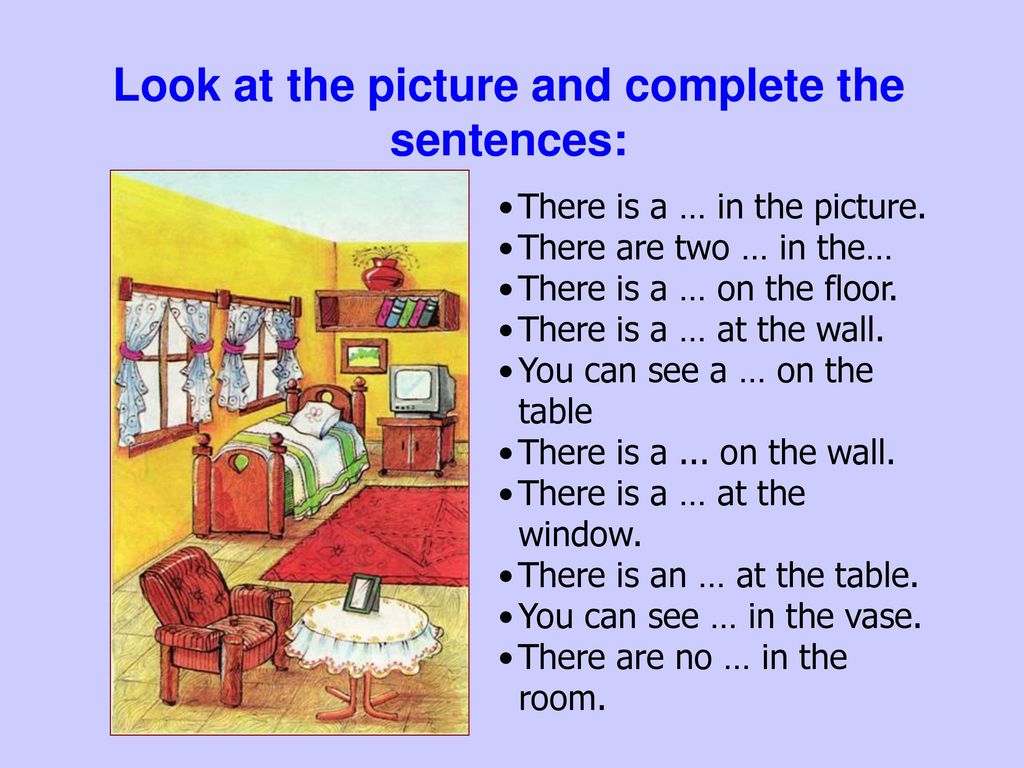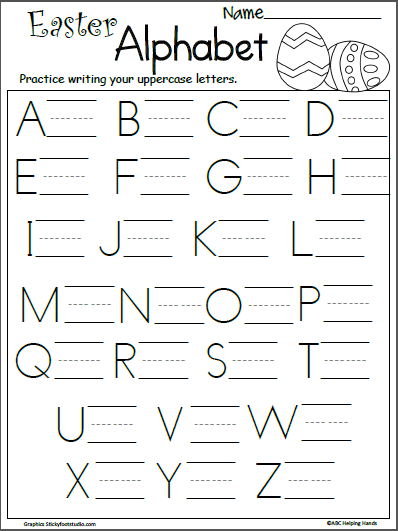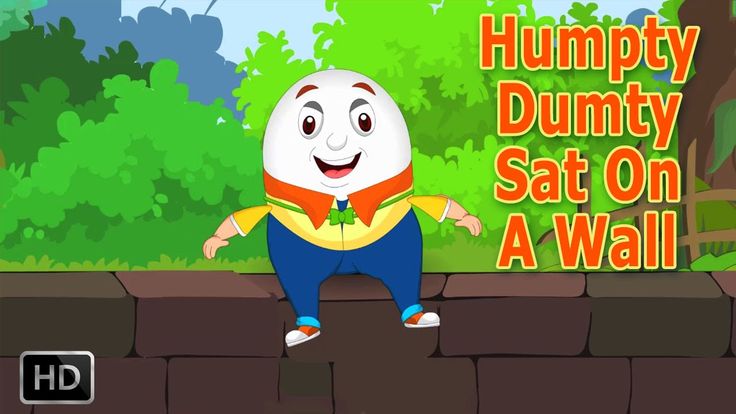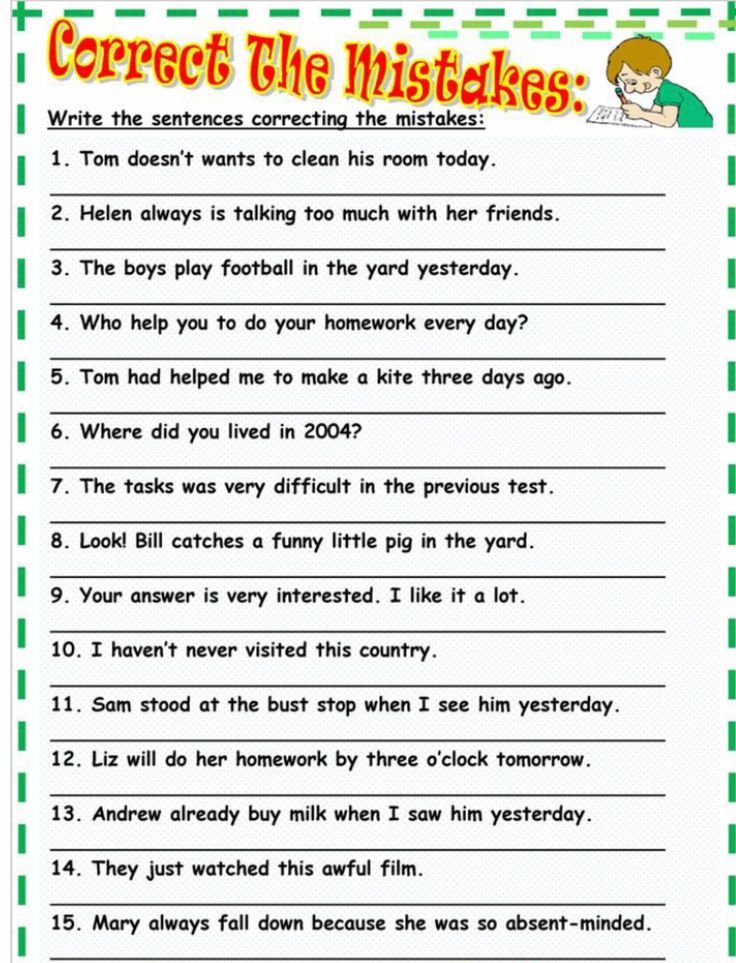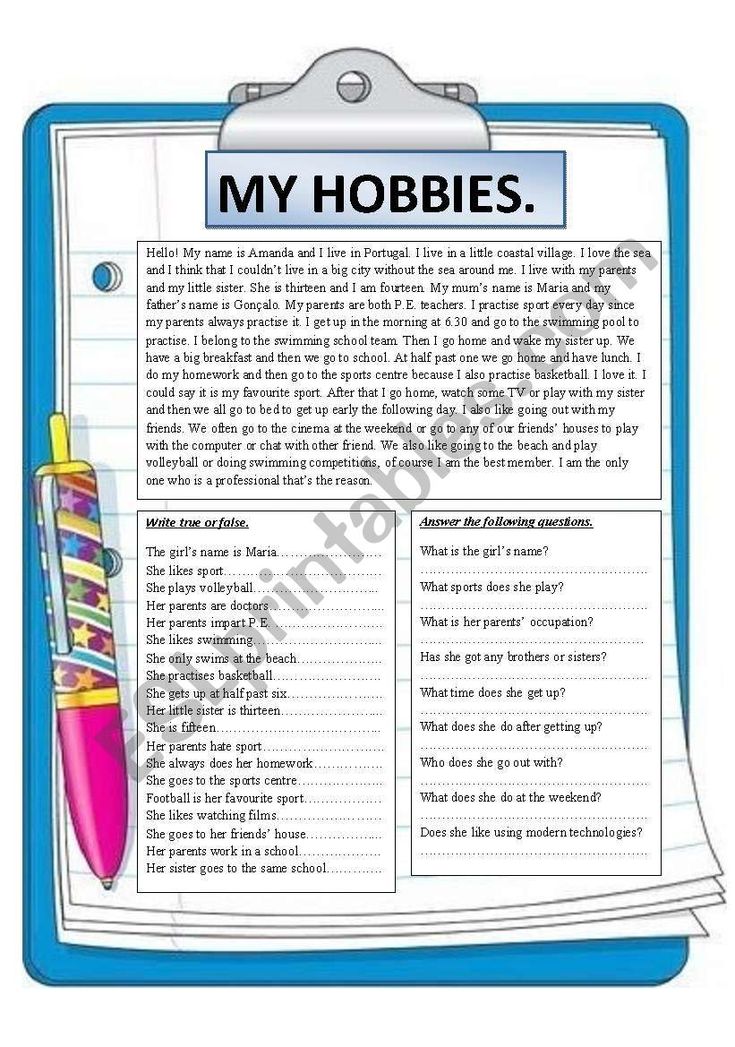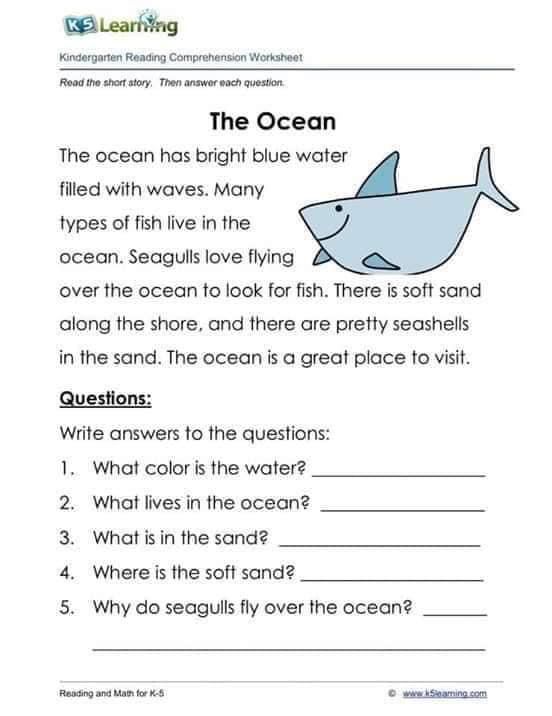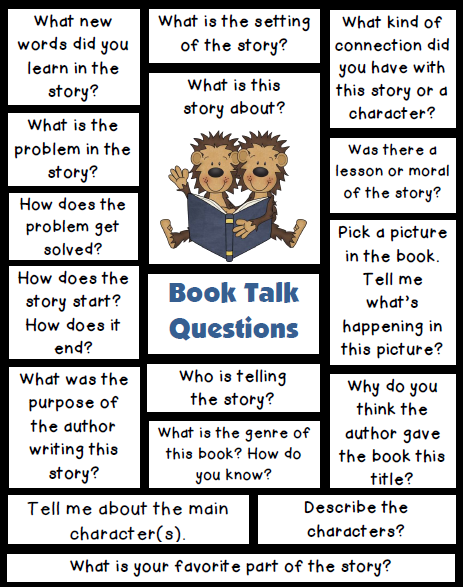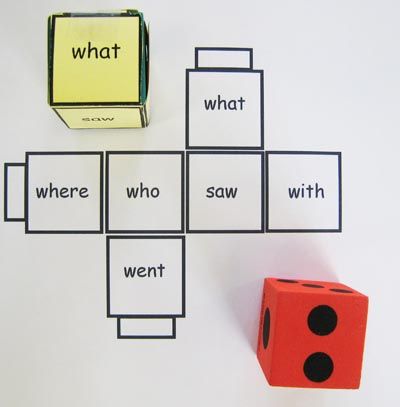What is concept of print
Concepts of print
Concepts of print refers to the awareness of 'how print works'. This includes the knowledge of the concept of what books, print, and written language are, and how they function. It encompasses a number of understandings that allow the reading process to take place including:
- understanding that print conveys a message
- knowledge about book orientation and directionality of print
- distinction between sentences, words and letters
- knowledge of the alphabetic system and the difference between letters and words.
The main understandings or elements of Concepts of Print for English include the concept of text (how a text conveys a message), concept of book (how a book works, how different texts are organised), the idea of directionality (that English books are read from left to right, top to bottom), and other mechanical features (spacing, punctuation, the difference between letters, numerals, and other symbols).
Components of concepts of print
Concepts of print are important for emergent and early reading and writing (Clay, 1993).
Concepts of text
Understanding that print relays a message.
Concept of book
- Book handling - holding the book the right way up
- Front cover, back cover
- Title, author, illustrator, blurb
Directionality
- Beginning at the front of the book, ending at the back
- Turning pages right to left
- Concept of top and bottom of a page - beginning at the top of the page and ending at the bottom of the page
- Reading pages from left to right
- Reading words from left to right
- Return sweep - reading left to right then sweep back to the beginning of the following line of text
- Concept of first, middle, last
- Word-to-word matching
Mechanics
- Knowledge that words are separated by spaces
- Recognising the difference between symbols including, alphabetic letters vs numerals vs punctuation
- The purpose of punctuation and capital letters
- Understanding that most printed words are read the same way each time (for example, w-o-u-l-d will always be 'would')
Through exposure to shared book reading in early childhood, and through modelled, shared, and guided reading in the early years, children develop concepts of print.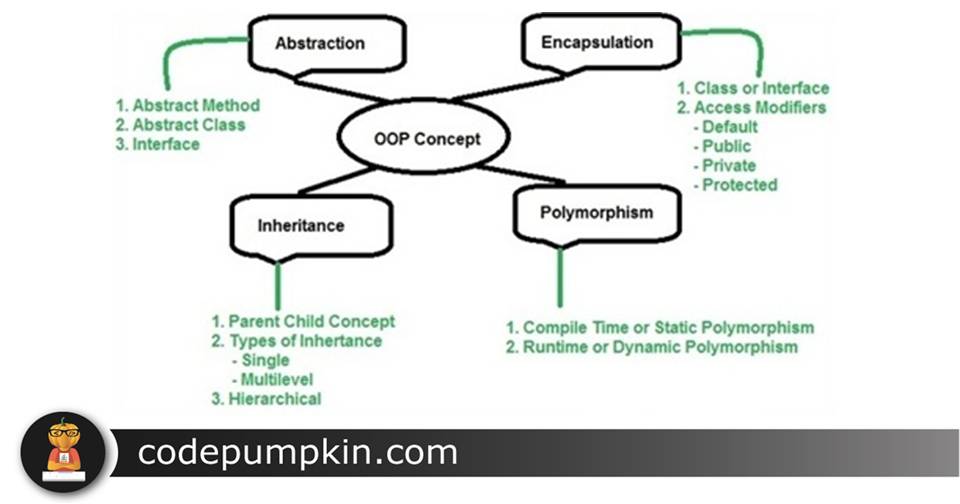
The Victorian English Online Interview (EOI) assesses Concepts of Print in modules 1 to 3.
Examples to support the development of Concepts of Print
Concepts of print should be taught through text within the literacy lesson, for example by:
- reading a poem or a song that students are familiar with and highlighting features of the text – e.g. capital letters, full stops and discussing the purpose of these features
- reading a storybook and modelling and/or identifying features of text while reading, for example differences between words and letters, directionality, return sweep, front and back cover of book etc.
- reading books with different font types/sizes, bold, exclamation mark, question mark and capital letters
Building a print rich classroom environment – using labels, alphabet posters, word walls, reading corners also contributes to the development of concepts of print.
For examples, visit:
- Modelled Reading
- Shared Reading
- Guided Reading
Alphabet knowledge
Alphabet knowledge is also considered a Concepts of Print component.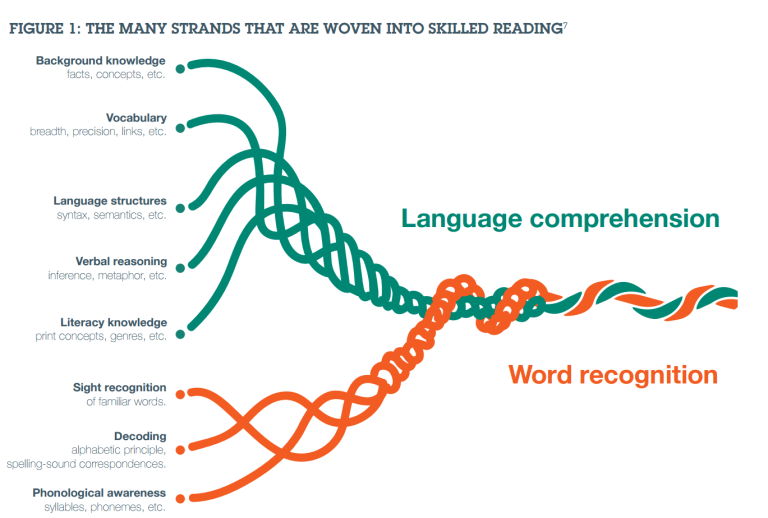 This includes knowledge of the names of each letter, the order of the alphabet, recognition of each upper and lower case letter, and knowing the difference between letters and words.
This includes knowledge of the names of each letter, the order of the alphabet, recognition of each upper and lower case letter, and knowing the difference between letters and words.
Alphabet Knowledge includes recognising all the letters of the alphabet by name. This includes recognising upper and lower case letters. The metalinguistic awareness of knowing the difference between a 'word' and a 'letter' is also important for alphabet knowledge.
Relationship with phonics
While alphabet knowledge is the ability to recognise and name upper and lower case letters, phonics is the knowledge of sound-letter patterns, that is the sounds that letters make.
As there are 44 sounds (phonemes), but only 26 letters, many letters make more than one sound. Also, letters are used to form graphemes, which could consist of one letter (graph), two letters (digraph), three letters (trigraph) or four letters (quadgraph).
An important first step to learn the relationships between sounds is to have well developed Alphabet Knowledge: that is to know what each letter is called, and to be able to recognise these letters quickly and reliably.
Once students have strong alphabet knowledge they are able to apply this knowledge to learn about the sounds that letters and letter patterns (graphemes) make, and how phonemes map onto graphemes, i.e. phonics.
For more information, visit:
- Phonics
- The 44 Sounds of English (docx - 116.91kb)
Relationship with phonological awareness
While alphabet knowledge is the ability to recognise and name upper and lower case letters, Phonological awareness refers to the awareness of sounds, rhymes, and syllables within words. Phonemic awareness (a critical subset of phonological awareness) refers to the ability to identify, segment, blend, delete and manipulate individual sounds. Alphabet knowledge is related to phonological awareness as children need to understand that words are made up of syllables, onset/rime, and individual sounds, and that letters of the alphabet are used to represent these sounds, as graphemes.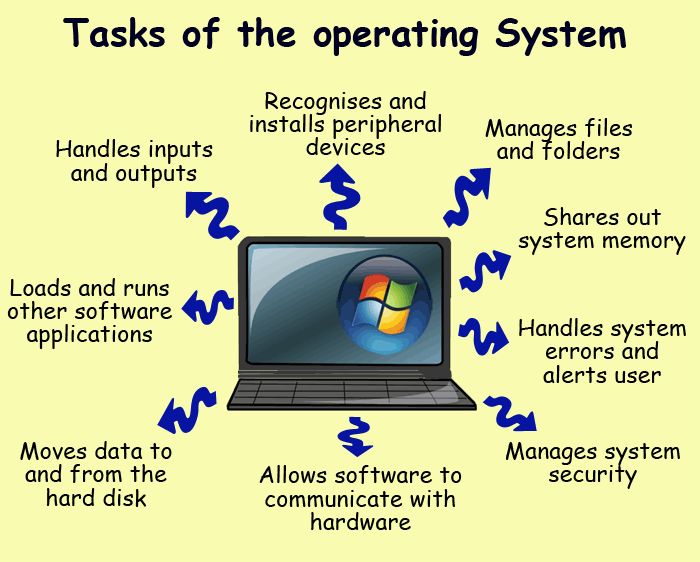
For more information, visit: Phonological Awareness
Examples of alphabet knowledge activities
Contextualised teaching of alphabetic knowledge can occur through reading a fiction or non-fiction text to, for example:
- introduce the sound and the letter in focus, writing the letter before reading the text
- highlight particular letter/letters within the text
- identify initial sounds of words and distinguish upper and lower case letters
- recognise consonant digraphs/trigraphs
- discuss the different sounds that a letter can make from examples in a text
- find words that contain different consonant diagraphs e.g. /sh/, /ch/, /th/ – lunchbox, shoes, should, the, that
- compile words or letters from a text into lists to make games that will promote multiple exposure and repetition of alphabetic knowledge such as bingo, snap, memory, tic tac toe, letter sort.
For examples, visit:
Phonological awareness allows students to hear the differences between words and sounds.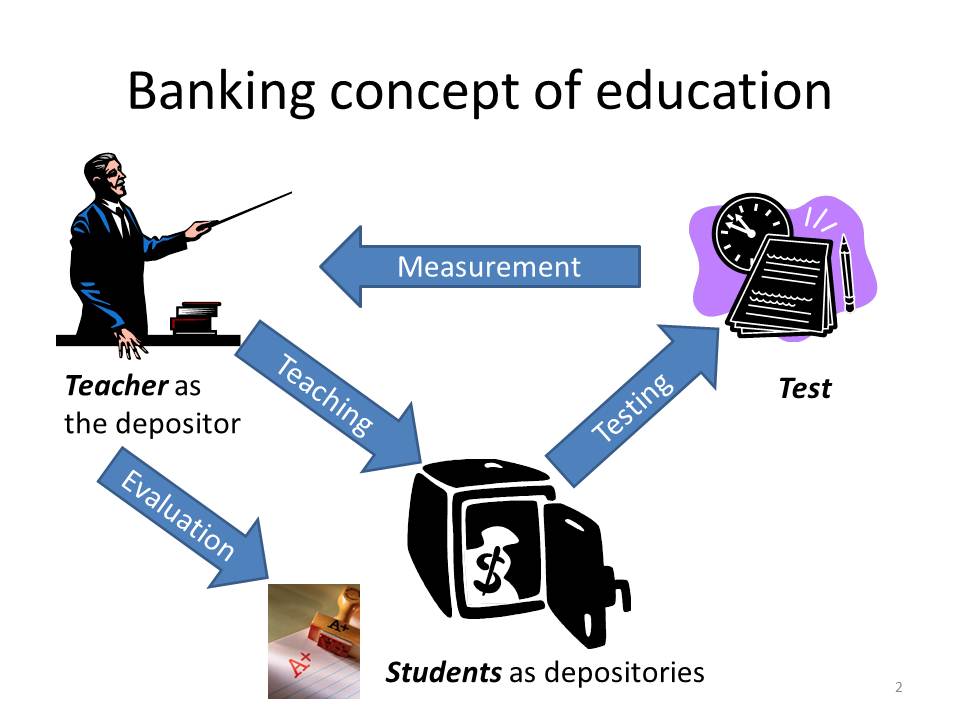 Concepts of Print includes the recognition of symbols as letter shapes. Once this understanding is established, the letter shapes can be associated with sounds, connecting the visual, auditory and oral systems.
Concepts of Print includes the recognition of symbols as letter shapes. Once this understanding is established, the letter shapes can be associated with sounds, connecting the visual, auditory and oral systems.
Foundation
Reading
- Recognise all upper- and lower-case letters and the most common sound that each letter represents (Content description VCELA146)
- Understand concepts about print and screen, including how books, film and simple digital texts work, and know some features of print, including directionality (Content description VCELA142)
Level 1
Reading
- Understand concepts about print and screen, including how different types of texts are organised using page numbering, tables of content, headings and titles, navigation buttons, bars and links (Content description VCELA177)
Pathway A
Reading and viewing
Level A1
- Understand the direction of English text (VCEALA034)
- Understand that texts are meaningful (VCEALA035)
- Distinguish Roman script from non-Roman script (VCEALA039)
- Understand and explore the basic features of different texts (VCEALL043)
- Understand and explore the basic features of different texts (VCEALL043)
- Identify some sounds in words (VCEALL050)
- Recognise capital letters, spaces and full stops (VCEALL052)
- Follow text with finger while reading (VCEALL053)
Level A2
- Understand how different types of images in texts contribute to meaning (VCEALA116
- Understand and use a small range of metalanguage for elements of text (VCEALL125)
- Relate most letters of the alphabet to sounds (VCEALL131)
- Understand and use simple metalanguage for books and reading (VCEALL044)
- Recognise that full stops and question marks separate text (VCEALL133)
Writing
Level A1
- Respond to the terms 'writing' and 'drawing' appropriately (VCEALA059)
- Illustrate a simple text (VCEALC058)
- Write a simple text that fulfils a function (VCEALC057)
- Recognise the importance of accurate reproduction of letters and words (VCEALA060)
- Use some conventions for printed English (VCEALL081)
- Experiment with some familiar punctuation (VCEALL079)
- Understand some terminology of writing in English and/or home language (VCEALA068)
Level A2
- Illustrate texts purposefully (VCEALC139)
- Use some punctuation consistently
- Adjust size of writing, colour, layout and choice of media to support meaning (VCEALL160)
Pathway B
Reading and viewing
Level BL
- Show awareness that texts convey meaning (VCEALA191)
- Distinguish Roman script from non-Roman script (VCEALA195)
- Recognise and explore texts in different media and modes (VCEALL199)
- Understand and explore the basic layout and conventions of simple texts (VCEALL200)
- Use basic terminology of reading (VCEALL202)
- Recognise the letters of the alphabet (VCEALL208)
- Understand the function of spaces, capital letters and full stops (VCEALL209)
- Demonstrate reading-like behaviour (VCEALL210)
- Attempt to self-correct (VCEALL211)
Writing
Level BL
- Copy words, phrases or sentences accurately and carefully (VCEALC216)
- Understand the difference between writing and drawing, and that writing changes according to context and purpose (VCEALA219)
- Apply common conventions when copying or writing texts (VCEALL236)
- Copy basic punctuation as part of writing work (VCEALL238)
Clay, M. M. (1993). An observation survey of early literacy achievement. Heinemann, 361 Hanover St., Portsmouth, NH 03801-3912.
M. (1993). An observation survey of early literacy achievement. Heinemann, 361 Hanover St., Portsmouth, NH 03801-3912.
Concepts of print (emergent literacy)
The awareness of how print works including emerging knowledge about books, print, and written language, and how we use them.
Concepts of print can be described as a "set of rules" that are followed by readers and writers so that the text can be understood in the intended way. Concepts of print demonstrate to children the logistics of reading and writing, which allow the processes of literacy to take place.
For example:
- understanding that print relays a message
- knowledge about book orientation and directionality of print
- book handling (e.g. holding a book right way up, turning pages)
- emerging knowledge of the alphabet
- awareness of books, pages, words and letters.
Children who are learning about books and reading need to know these concepts so that they are able to understand the rules and begin to understand the message.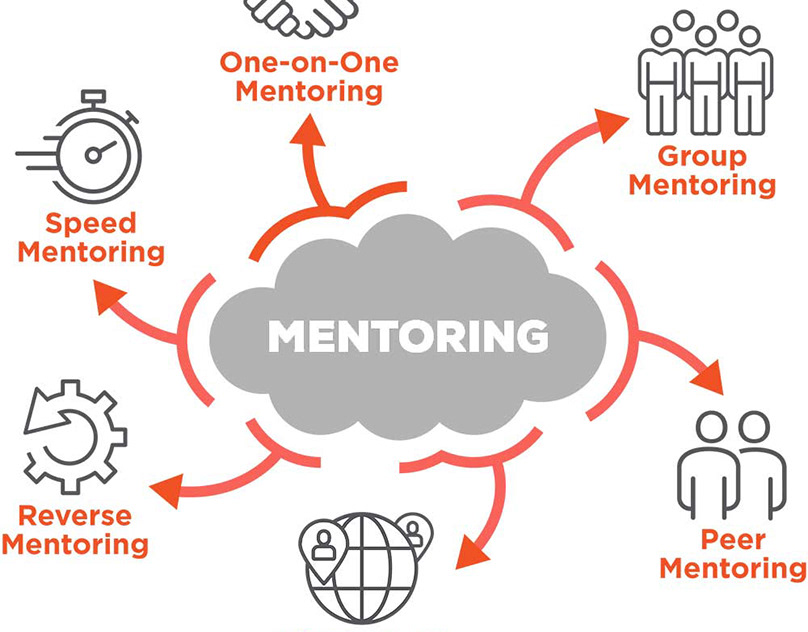
Examples of concepts of print
The main understandings or elements of concepts of print for English include the concept of text, concept of book, the idea of directionality, mechanical features, and alphabet knowledge. Concepts of print are important for emergent reading and writing (Clay, 2013; Justice & Ezell, 2004; Piasta et al., 2016).
From a very young age children engage in writing and drawing to represent real things (Bradford and Wyse, 2010). Children can distinguish between drawing, writing, and numbers based on their understanding of the concepts they represent (Lancaster, 2007; Wells Rowe & Neitzel, 2010).
Using verbal and non-verbal cues to direct children’s attention during reading affects their later print knowledge and literacy skills (Justice & Ezell, 2004).
Similarly, calling children’s attention to the sound structure of words during reading promotes their phonological awareness (Piasta et al., 2016). Shared reading with embedded vocabulary instruction also helps children to make meaning from print, especially when reading is coupled with extension activities (Piasta et al. , 2016).
, 2016).
Concepts of print examples diagram
Concept of text
- Understanding that print relays a message
Concept of book
- Book handling - holding the book the right way up
- Front cover, back cover
- Title, author, illustrator, blurb
Directionality
- Beginning at the front of the book, ending at the back
- Turning pages left to right
- Concept of top and bottom of a page - beginning at the top of the page and ending at the bottom of the page
- Reading pages from left to right
- Reading words from left to right
- Return sweep - reading left to right then sweep back to the beginning of the following line of text.
Mechanics
- Knowledge that words are separated by spaces
- Recognising the difference between symbols including, alphabetic letters vs. numerals vs. punctuation
- The purpose of punctuation and capital letters
- Understanding that most printed words are read the same way each time (e.
 g. the letters w-o-u-l-d will always say 'would').
g. the letters w-o-u-l-d will always say 'would').
Alphabet knowledge is also considered a concepts of print component. This includes:
- knowledge of the names of each letter
- knowing the order of the alphabet
- recognition of each upper and lower case letter
- knowing the difference between letters and words.
The metalinguistic awareness of knowing the difference between a "word" and a "letter" is also important for alphabet knowledge. This is because children need these metalinguistic terms to talk about the concepts they are grasping, as they begin to recognise familiar words and letters.
It should be noted that children are not required to have an extensive knowledge of the sounds that letters make (phonics) before transition to primary school. However, being able to recognise and name letters (alphabet knowledge) is a very useful emergent literacy skill, encouraged in Language and Emergent Literacy Learners. The development of alphabet knowledge before school (along with phonological awareness and oral language) is an important predictor of early reading success.
Part of the mechanics of concepts of print includes the recognition of letters. Once children have a grasp of the concept of letters and their names, then the letter shapes can be associated with their sounds.
Phonological awareness is the knowledge of how the sound system (phonology) works (e.g. syllables, rhyming, individual speech sounds in words).
While alphabet knowledge (part of concepts of print) is the ability to recognise and name upper and lowercase letters, phonics is the knowledge of sound-letter patterns: what sounds letters make.
Alphabet knowledge is a crucial precursor to early phonics knowledge.
For more information see:
- Phonological awareness
- Phonics
- Victorian Early Years Learning and Development Framework
- VEYLDF Illustrative maps
Outcome 4: Learning
Children resource their own learning through connecting with people, place, technologies and natural and processed materials
- explore the purpose and function of a range of tools, media, sounds and graphics
Outcome 5: Communication
Children engage with a range of texts and get meaning from these texts
- view and listen to printed, visual and multimedia texts and respond with relevant gestures, actions, comments and/or questions
- explore texts from a range of different perspectives and begin to analyse the meanings
- actively use, engage with and share the enjoyment of language and texts in a range of ways
- recognise and engage with written and oral culturally constructed texts
Children begin to understand how symbols and pattern systems work
- view and listen to printed, visual and multimedia texts and respond with relevant gestures, actions, comments and/or questions
- develop an understanding that symbols are a powerful means of communication and that ideas, thoughts and concepts can be represented through them
- begin to be aware of the relationships between oral, written and visual representations
- begin to recognise patterns and relationships and the connections between them
General ideas
Build a print rich environment:
- use labels, alphabet posters, word walls, reading corners
Incorporate print (with images) in everyday situations, including routines, transitions, mealtimes, and nappy changes:
- use labels, posters, signs, instructions, recipes
Provide print-based play materials to enhance planned and spontaneous play:
- use labels, pretend money, name tags, signs, newspapers, books, lists, menus, diagrams, directions
Use a poem or a song that children are familiar with and highlight the features of a text in different colours.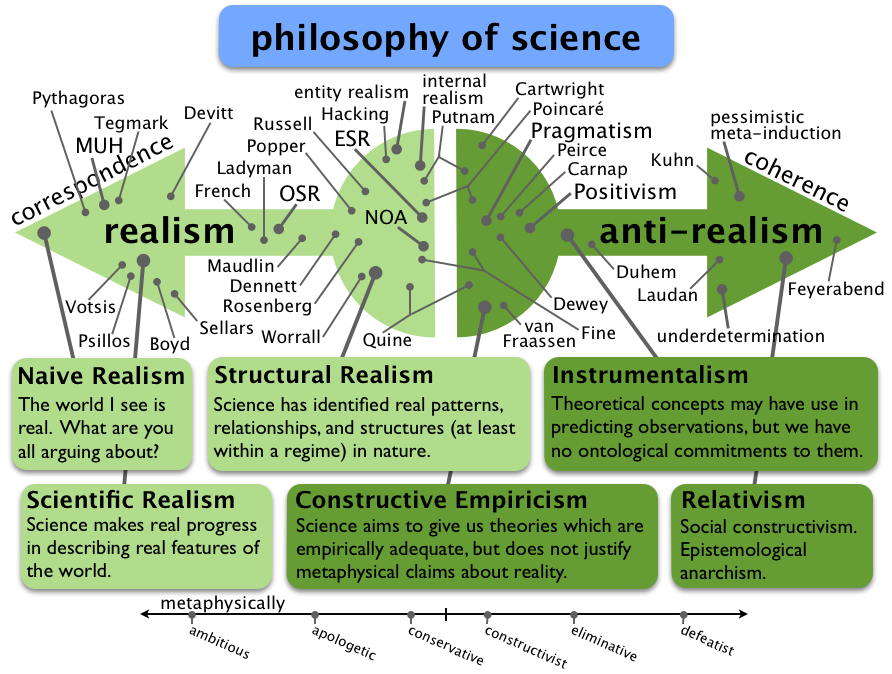
This leads to discussion about the purpose of these features. For example:
- capital letters (highlight green)
- full stops (highlight yellow)
Read a storybook to model and/or identify features of a text while reading, for example differences between words and letters, directionality, return sweep, front and back cover of book..
Read books with different font types/sizes, bold, exclamation mark, question mark and capital letters.
Ideas for alphabet knowledge
- Make letter shapes out of playdough, clay, or other materials
- Use magnetic letters (or writing) for recognising initial sounds of objects
- Bingo
- Go fish with alphabet cards
- Upper/lower case letter matching
- Early handwriting experiences - letter formation
- Alphabet soup
- Circle time - recognising cards or 3D letters from a 'mystery bag'
- What am I drawing? - draw a letter on each other's back; children need to guess the correct letter
- Read a familiar poem or story - highlight one or more familiar words, letter or letters of the alphabet within the story
- Lots of Trucks: Play, Reading, and Extending Language (Part 1)
- Making Meaning: Reading with Children
For age groups:
- Where Is The Green Sheep?
For age groups:
- Early language users (12 - 36 months)
- Reading areas
- Print in other languages
- Chia Seed Sprouts
- Print in Sociodramatic Play.

For age groups:
- Language and Emergent Literacy Learners (30 - 60 months)
Learning foci and teaching practices:
- Phonological Awareness
- Phonics
- Literacy-rich environment
- Reading with children
- Writing with children
- Independent reading and writing
- Play
- Sociodramatic Play
- Performing Arts
- Fine Arts
Bradford, H., & Wyse, D. (2010). Writing in the early years. In Wyse, D., Andrews, R., & Hoffman, J. (Eds). The Routledge international handbook of English, language and literacy teaching (pp. 137-138). London: Routledge.
Clay, M. M. (2013). An observation survey of early literacy achievement (3rdEd.). Auckland: Pearson.
Justice, L. M., & Ezell, H. K. (2004). Print Referencing: An Emergent its Clinical Applications. Language, Speech, and Hearing Services in Schools, 35(April), 185–193.
Lancaster, L. (2007). Representing the ways of the world: How children under three start to use syntax in graphic signs. Journal of Early Childhood Literacy, 7(2), 123-154.
Piasta, S., Phillips, B., Williams, J., Bowles, R., & Anthony, J. (2016).
Measuring Young Children’s Alphabet Knowledge: Development and Validation of Brief Letter-Sound Knowledge Assessments. The Elementary School Journal, 116(4), 523-548.
Victorian State Government Department of Education and Training (2016) Victorian early years learning and development framework (VEYLDF) (pdf - 1.14mb) Retrieved 3 March 2018,
Victorian Curriculum and Assessment Authority (2016) Illustrative Maps from the VEYLDF to the Victorian Curriculum F–10. Retrieved 3 March 2018,
Wells Rowe, D., & Neitzel, C. (2010). Interest and Agency in 2- and 3-Year-Olds’ Participation in Emergent Writing. Reading Research Quarterly, 45(2), 169–195. dx.doi.org/10.1598/RRQ.45. 2.2
2.2
What is a seal and a stamp from a legal point of view
A bit about printing
In ordinary life, a person does not use seals. If personal identification is required, you can put a fingerprint. This is an individual mark.
And to solve business issues since ancient times, people began to use devices, they were made of stone, bone, precious woods. The rulers of this purpose were rings.
Currently, a stamp is a device, a cliché made of rubber or polymer, which is used to print on paper with the full name of the company, its location and other data. nine0005 The sealing is a ritual, a sacred act that seals agreements.
To have or not to have?
As in the song: "Think for yourself, decide for yourself."
Is it important to have this sign on the document?
As early as 40 years ago, the USSR adopted the Regulations on the procedure for using the seal, and it is still in effect.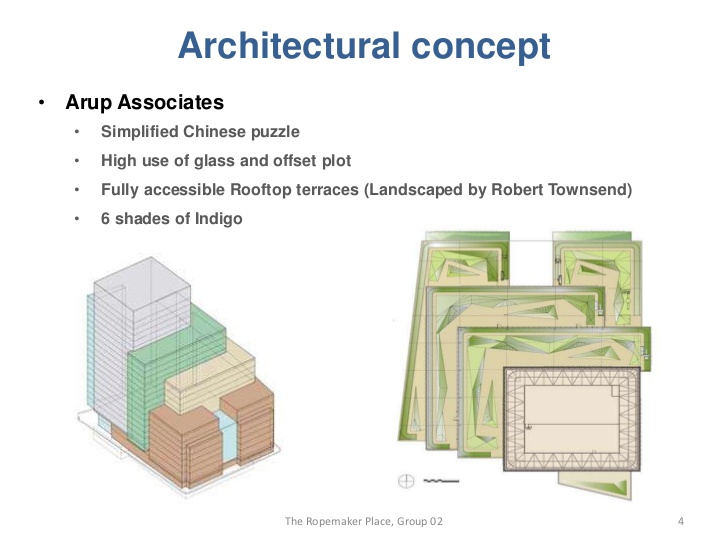
Distinguish:
- official seals (GOST R 51511-2000)
- basic for small businesses, lawyers, notaries, doctors, the requirements for them are not so strict; nine0024
- and additional, for different activities.
Civil law is not too strict in this area, however, as always, confusing. It is not even spelled out clearly and unambiguously, for example, in the Civil Code of the Russian Federation, whether or not all legal entities need to have a seal. Based on the federal law, which came out not so long ago (82-FZ of 04/06/2015), a company, starting in 2015, has the right to work without a seal, if this is prescribed in the Charter. An individual entrepreneur can also work without a seal (for more details, see this article). nine0007
For a long time, legislators struggled with the question of whether an imprint in the work book is needed. In 2017, the controversial issue was resolved, now, if a private entrepreneur works without a seal, then it will not be in the labor force.
But most often such moments are decided in court, because both workers and employees of the FIU find fault with the lack of a seal.
The result of this fable is that it is more profitable and easier to have a seal than to constantly prove why it is not.
What is the difference between seal and stamp
The presence of a seal serves as a confirmation of authenticity, and a stamp is placed to replace repeated inscriptions.
Where and why is the seal placed?
Printing is an important business element of almost every organization and should be treated responsibly.
Firms that take a responsible approach to this matter write instructions in accordance with GOST for document management and archiving, which indicate:
- list of stamps, facsimiles and seals;
- the place where they will be stored; nine0024
- list of employees responsible for storage and authorized to use them;
- directly the rules of use;
- list of documents requiring stamping.
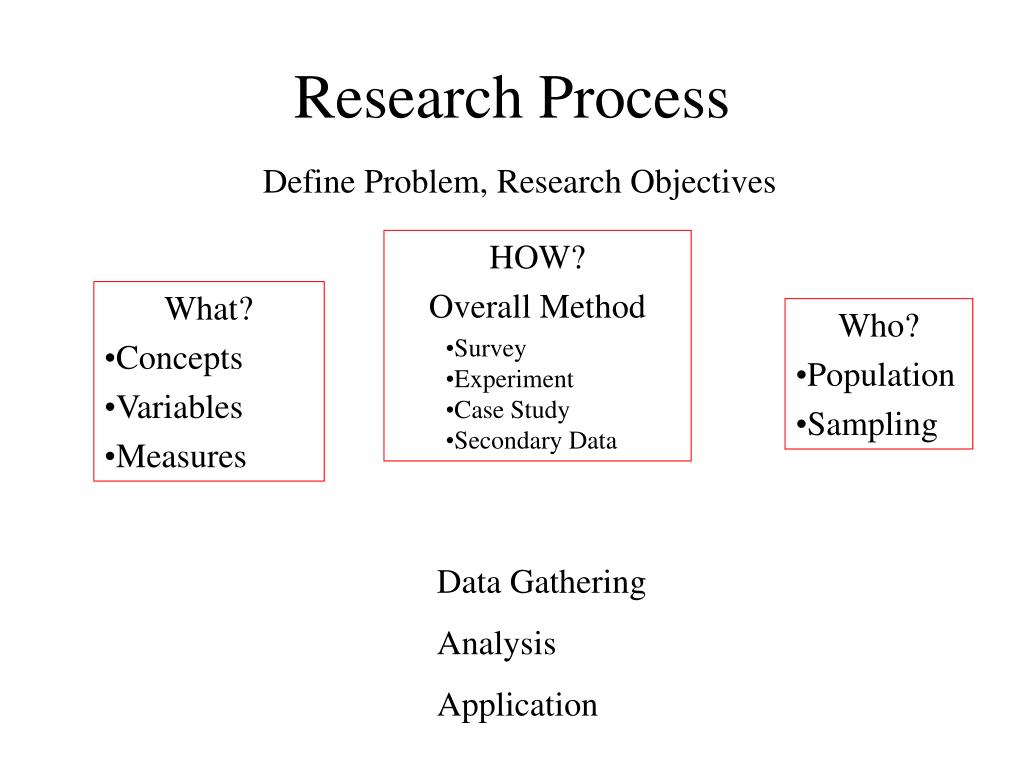
The transfer is carried out against receipt in the register. The place for it is in the safe.
Only original documents are stamped to confirm their legal validity.
If you see the label "M.P." feel free to put it there. The main thing is that it should not overlap the signatures and decryption. nine0007
And don't even think about putting your expensive stamp on blank sheets. Such frivolity can then turn into litigation. In our age of technological progress, documents can be forged, and the enterprise itself can be subjected to raider seizure.
Also, when developing clichés, it is worth using protective elements: rare fonts, distortion or imitation of a defect, microtext, control signs called “cerberus”, visible only under ultraviolet light, a raster field. Experts will advise you. nine0007
It is clear that it is impossible to insure yourself against forgery by 100% if your company is interested in such figures.
Seal or stamp - that is the question? What is the difference?
The question of where printing is needed on documents, and where a stamp can be dispensed with, arises regularly among business leaders. The fact is that the Civil Code of the Russian Federation recommends making an impression only if it is provided for by legal acts or by agreement of the parties.
Let's figure it out!
In his organization, the manager can make his own list of documents that need to be printed. An order is issued with a list of executives who have the right to sign.
According to the Labor Code business papers, i.e. orders, contracts, powers of attorney, etc., will be considered valid without it under Art. 67 of the Labor Code of the Russian Federation.
Primary documents, i.e. waybills, invoices are drawn up according to officially approved unified forms, therefore, if there is a sign “M.P.”, then a seal is required. nine0007
Stamps are needed where you often have to put down some kind of repetitive text on documents.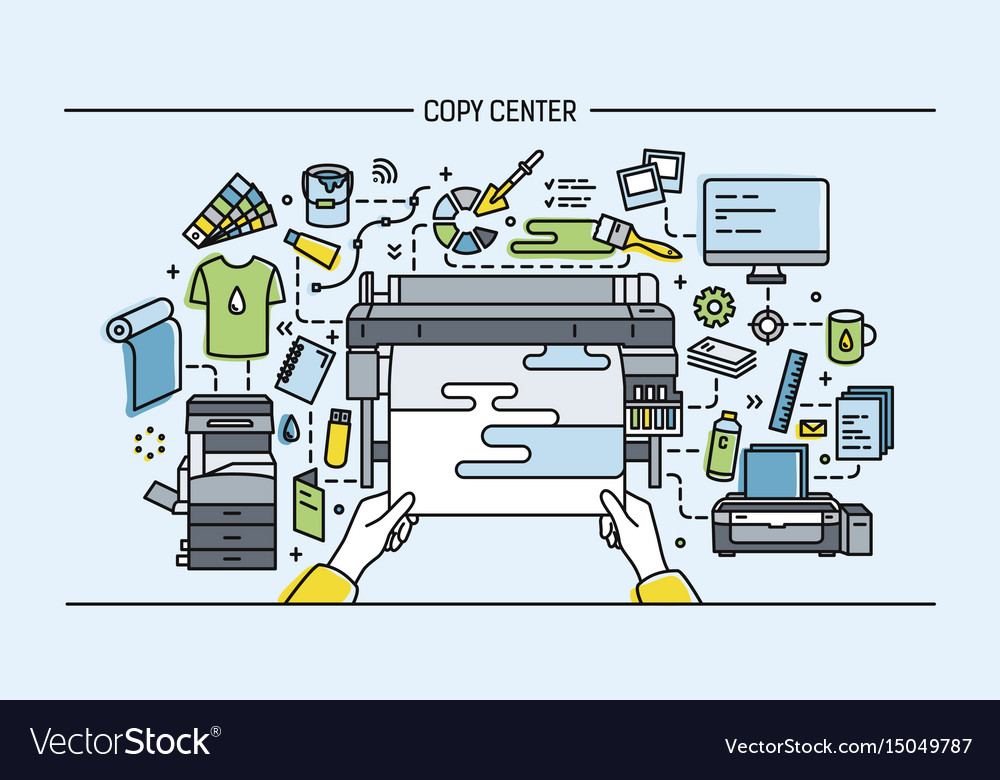 Company details, the word "paid" or "correct copy", stamp "secret" and other information.
Company details, the word "paid" or "correct copy", stamp "secret" and other information.
Copies of documents, extracts, certification of certificates are suitable for using stamps. They can be rectangular or triangular. The employees using them are responsible for their safety.
We also note that more and more organizations are switching to the use of an electronic digital signature of an EDS for tax reporting, and in judicial practice, a seal imprint is no longer qualified as a mandatory, but only as an additional requisite. nine0007
Recycle or throw away - which is right?
If the official (main) seal is no longer necessary for the organization, then how best to dispose of it?
Seal should be destroyed, not just thrown in the trash. This procedure can be done independently, when a special commission draws up an act indicating the date, place, those present and the reason for the destruction. The liquidation method is also prescribed there, then it is stored permanently.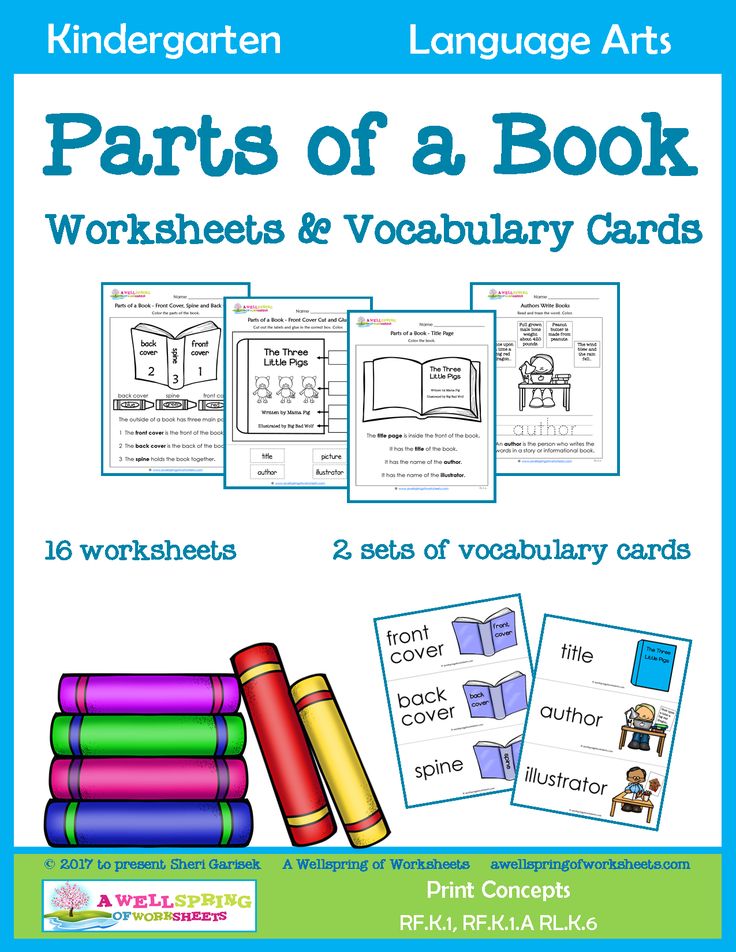
You can also contact the stamp workshop, where the entire disposal procedure is also documented. The destruction of clichés is carried out if the name, details of the organization changes or in case of liquidation of the company. nine0007
If you are in trouble and the seal is missing, you do not need to notify the authorities. You can order a cliché according to the print in the stamp workshop. If you suspect theft and you have a suspicion that the seal may be illegally used, you must report to the police and notify the media.
Some managers prefer to deal with this situation on their own.
For example, in our practice, there were cases when managers suspected that employees had made a copy of the seal of the organization and were using it illegally. To identify the violation, we made an exact copy of the seal with a very slight difference that is not visible to the eye. This difference looks like a blot on paper. But with the help of this "uncomplicated" protection, the leader could "catch" the violator.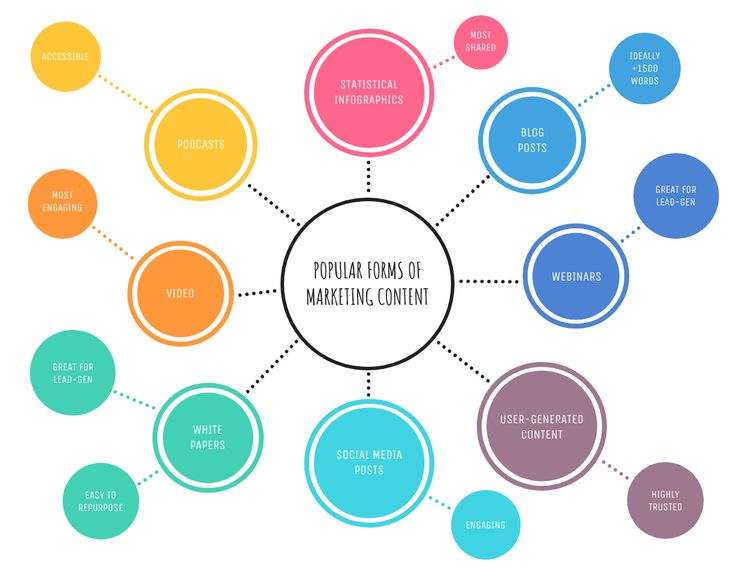 nine0005
nine0005
printing | it's... What is a seal?
[print] n. , f. , used comp. often
Morphology: (no) what? print what? print , (see) what? print what? seal about what? about printing ; pl. what? print , (no) what? seals , why? seals , (see) what? stamps what? seals , about what? about seals
1. Seal is a special device in the form of a plate or a circle with carved signs, letters for making an impression on something (on paper, sealing wax, wax, etc.). Round, triangular, large print. | Seal of any institution, clinic. | Close the seal in the safe. | He carried his personal doctor's stamp and prescription forms with him at all times. nine0037
nine0037
2. Seal is an imprint (on a document, certificate, prescription, etc.) by this device, which serves to certify, confirm something. Official seal. | Stamp the document. | The document is not valid without a large official seal.
signs, imprint
3. If on someone, on someone's face the seal of something is visible, then this means that the person's appearance, face bear noticeable traces of something experienced or being experienced. nine0003
Seal of sorrow, grief. | Seal of joy, optimism. | He could be called handsome, if not for the stamp of some hopelessness on his face.
4. If someone is said to have the seal of death on his face, then this means that the appearance of this person indicates that he is very sick and most likely to die.
5. If something bears the stamp of something, then this means that the object fully corresponds to something. nine0003
Art bears the stamp of an era. | The furnishings at home bore the stamp of poverty and hard hard work.
6. If there is a seal of silence on something, it means that one cannot speak about anything at all. In this case, there is a seal of silence, no one knows anything, no one says anything.
reputation
7. If, for example, any circumstances on someone stamp loser, this means that someone, as a result of something, acquires a lasting reputation as a loser. He is said to be a good lawyer, but several lost trials in a row have marked him as a loser.
8. If someone is said to be, for example, marked with the seal of a genius, it means that this person is considered very talented, brilliant.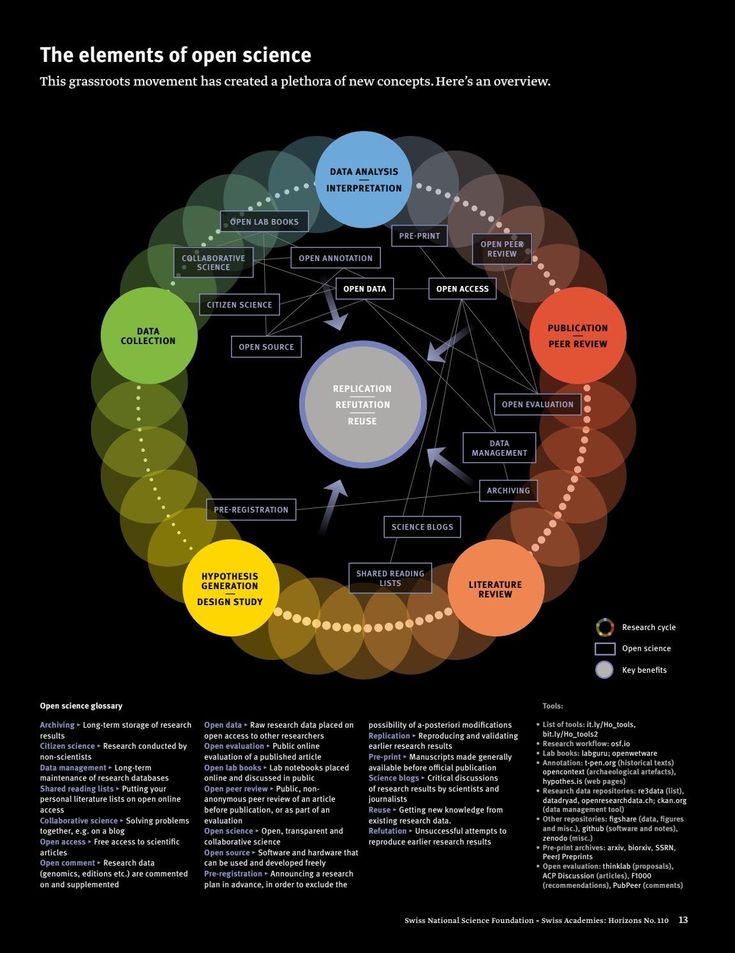
9. If something is stored with seven seals , then this means that something is very carefully guarded. We do not know any details, for us this information is sealed.
10. The expression book with seven seals is used when talking about something completely incomprehensible, inaccessible. All these files, directories, bytes are a book with seven seals for me.
[publishing] n. , f. , used comp. often
1. Printing is the production of text, drawings, etc. by printing. Prepare the manuscript for printing.
2. Print is a set of printed, usually periodicals, press. Central, local, foreign press.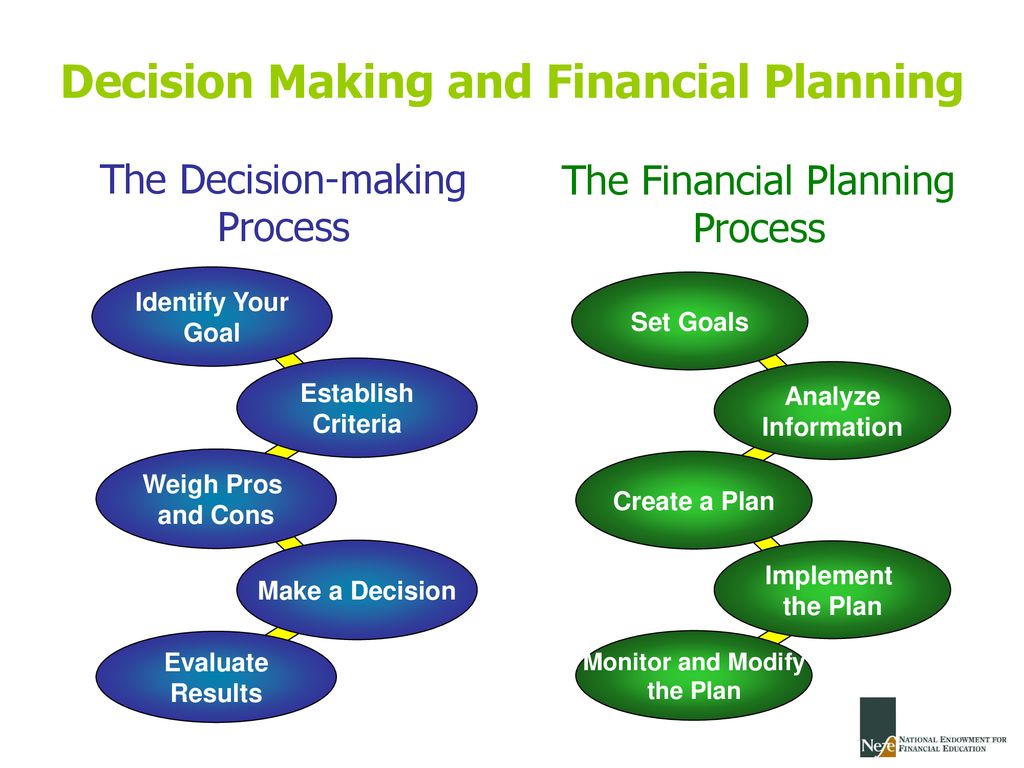
Learn more

